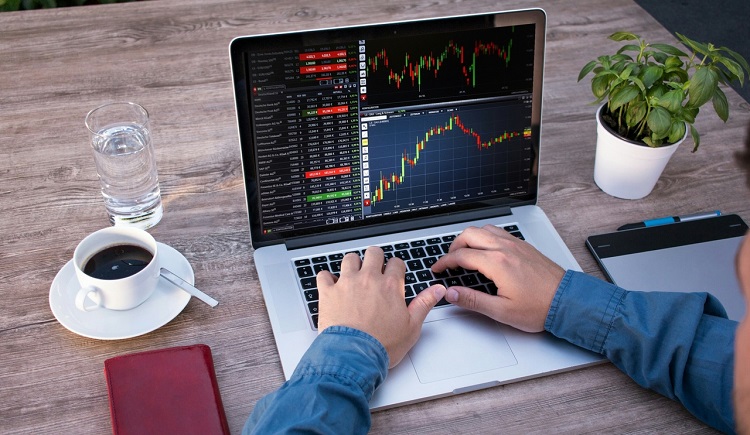Mastering scanning tools is important for traders working in dynamic financial markets. Strategic criteria definition, regular monitoring, and a balance of automated and manual analysis are key to optimizing scanner effectiveness.
By honing these skills, traders can efficiently uncover market opportunities, make well-informed decisions, and stay ahead of rapidly evolving market trends. Explore the ins and outs of trading scanners today on your favorite trading simulator, and see how this new skill can level up your investing powers!
Table of Contents
What Are Scanners in Trading?
Scanners help investors sniff out opportunities, anomalies, and potential trades within the market. They are sophisticated tools that help traders sift through mountains of data to pinpoint specific stocks, currencies, or commodities that meet predefined criteria.
Scanners act as your eyes and ears, tirelessly scanning and analyzing information to present you with a curated list of trading prospects. Scanners save traders precious time by automating the process of identifying trading opportunities, allowing them to focus on strategy and decision-making.
What Are the Different Types of Scanners?
When investing, having the right tools can make all the difference. Different types of scanners assist traders by highlighting specific market dynamics, whether it’s volatile price movements, surges in trading volume, or intricate price patterns.
Volatility Scanners
Volatility scanners track assets’ price movements, flagging those with significant price fluctuations. Traders use these scanners to identify assets with high potential for quick profits or sudden market shifts.
Volume Scanners
Volume scanners monitor trading volumes of assets, highlighting those experiencing unusual trading activity. They help traders identify trends or anomalies based on trading volume data.
Price Action Scanners
Price action scanners analyze historical price movements of assets to predict potential future price movements. By examining patterns and trends in price action, traders use these scanners to make informed trading decisions.
What Are Trading Simulators?
Trading simulators act as the training wheels for newbies and the advanced testing ground for seasoned traders. These virtual platforms allow you to experience the highs and lows of trading without risking your hard-earned cash. It’s like a flight simulator for pilots, preparing you for the real deal without the crash-and-burn scenarios.
Trading simulators provide a risk-free environment to practice trading strategies and offer valuable insights into market dynamics, risk management, and decision-making processes. Imagine being able to test various trading approaches, experiment with new techniques, and refine your skills — all without the stress of financial losses.
Trading simulators are where traders hone their craft and gain the confidence to navigate the turbulent waters of the trading world. It’s where mistakes are made, lessons are learned, and strategies are molded into powerful tools.
As you’re learning how to use scanners, it’s important to try out your new tools on a simulator before hopping into real-world trading to hone your skills and safeguard your wealth. Below, discover a few tips and tricks on how to use scanners, whether you’re trying them out on a simulation or venturing into IRL stocks.
How Do You Use Scanners Effectively?
Effectively harnessing the power of scanning tools is important for traders seeking success in the fast-paced world of financial markets. By employing a strategic approach, remaining vigilant, and incorporating manual analysis alongside automated scans, traders can maximize the potential of scanners to identify key opportunities.
Understanding how to use scanners effectively streamlines the trading process and enhances decision-making capabilities, ultimately leading to more informed and profitable trades. Here are some best practices for using scanners effectively.
Define Clear Criteria
Establish specific criteria based on your trading strategy and goals. By defining parameters such as price range, volume, and indicators, you can narrow down your search results to align with your preferred trading style.
Regular Monitoring
Keep a close eye on scanner alerts and updates. Markets are dynamic and ever-changing, so staying vigilant ensures you don’t miss out on potential opportunities or overlook critical signals.
Combine Manual Analysis
While scanners provide valuable insights, remember to supplement their findings with manual analysis. Human intuition and experience can often spot nuances that automated tools might overlook.
The Power of Scanners for Successful Trading
Trading scanners are indispensable tools that empower traders to navigate the complexities of financial markets efficiently. By leveraging scanners’ capabilities alongside trading simulators, traders can sharpen their skills, identify opportunities, and make informed decisions with confidence.
Remember, scanners are not a substitute for experience or strategic thinking. They are tools to enhance your trading journey, providing valuable insights and streamlining your research process. By incorporating scanners into your trading arsenal and following best practices, you can stay ahead of the curve and capitalize on market opportunities.
With the right mindset and a proactive approach, you can harness the full potential of scanners to achieve your trading goals and financially thrive.

